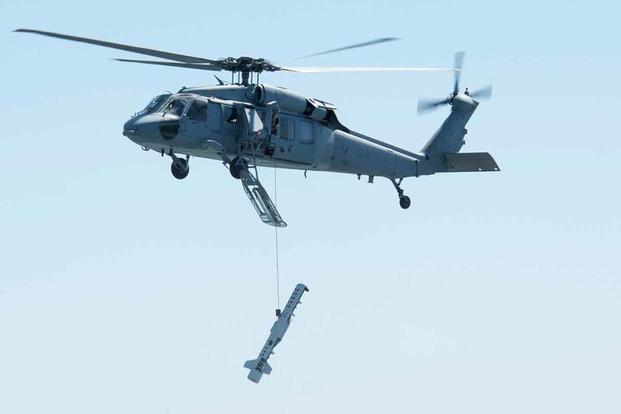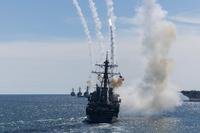The Navy has recovered a $2 million anti-mine pod inadvertently dropped by one of its helicopters this month off the coast of Virginia, near the entrance to the Chesapeake Bay.
An MH-60S Knighthawk assigned to Helicopter Sea Combat Squadron 2 on July 9 had an "unintentional jettison of the AN/AQS-235 Airborne Mine Neutralization pod over water in a training area north of Cape Henry," said Cmdr. Jennifer Cragg, a spokeswoman for Naval Air Force Atlantic.
There were no injuries or damage to the aircraft, and the Navy is investigating the situation, Cragg said. Cape Henry is at the northeast section of Virginia Beach.
"The Navy takes incidents such as this very seriously and will conduct a thorough investigation to determine the cause," she added.
Read Next: US F-15 Fighter Flew Near Iranian Passenger Jet Over Syria, Officials Confirm
Personnel from the Navy's Mobile Diving and Salvage Unit 2 were dispatched to find the pod and recovered it July 14.
The service didn't announce the incident when it occurred earlier this month. It was noted on a list of mishaps from the Naval Safety Center, which tracks major Navy and Marine Corps accidents.
The Naval Safety Center labeled the incident a Class-A mishap, which means something is destroyed beyond repair or damage exceeds $2.5 million. Cragg said the service will determine the type of mishap category, pending the full scope of damage.
The AN/ASQ-235 Airborne Mine Neutralization System clears unburied and moored sea mines. It uses sonar to detect mines and then deploys an expendable destructor, which is controlled from a console, that can identify and detonate to destroy the mines.
There were four service members in the MH-60S helicopter when the pod was mistakenly released. Cragg declined to say whether anyone is facing punishment, citing the probe into the mishap.
"It would be inappropriate to speculate the outcome as the investigation into this incident is ongoing," she said.
The helicopter was carrying one pod, Cragg added, as is typical for those kinds of missions. No other aircraft or boats or ships in the water were put at risk by the drop, she said.
-- Gina Harkins can be reached at gina.harkins@military.com. Follow her on Twitter @ginaaharkins.
Related: Student Naval Pilot Was Flying at 15,000 Feet When Engine Caught Fire













